The embroidery is of exceptional quality, with the reverse side almost indistinguishable from the front—an indication of superior workmanship. Creating such a shawl was a lengthy and labor-intensive process. First, a skilled artisan would spend weeks weaving the fabric thread by thread on a hand loom, followed by months of intricate embroidery by another craftsperson. Often, the calligraphic borders were embroidered by one artisan, while floral and geometric patterns were handled by another. This process could easily take over a year to complete.
Antique Persia has long been renowned for its gold and silver embroidery, a technique introduced around two thousand years ago. Gold-embroidered textiles were highly prized both in Asia and Europe, accessible only to the wealthiest individuals. The technique, known locally as zaribafi, is now a dying art, with few true masters remaining. This makes such a piece a rare find for discerning collectors.
Dimensions: Length 210 cm, Width 50 cm
Condition: The shawl shows its age, with a tear in the middle that appears to have been carefully sewn up many years ago. While the center still shows a tear, it is clear that the silk was handled with great care and reverence, preserving its rarity and value. Though washing could enhance its appearance, we prefer to maintain its antique condition.
Please examine the accompanying photographs carefully as they form an integral part of this description. The item will be shipped with full tracking and insurance. Please note that shipping costs include labor, packaging, and postage.


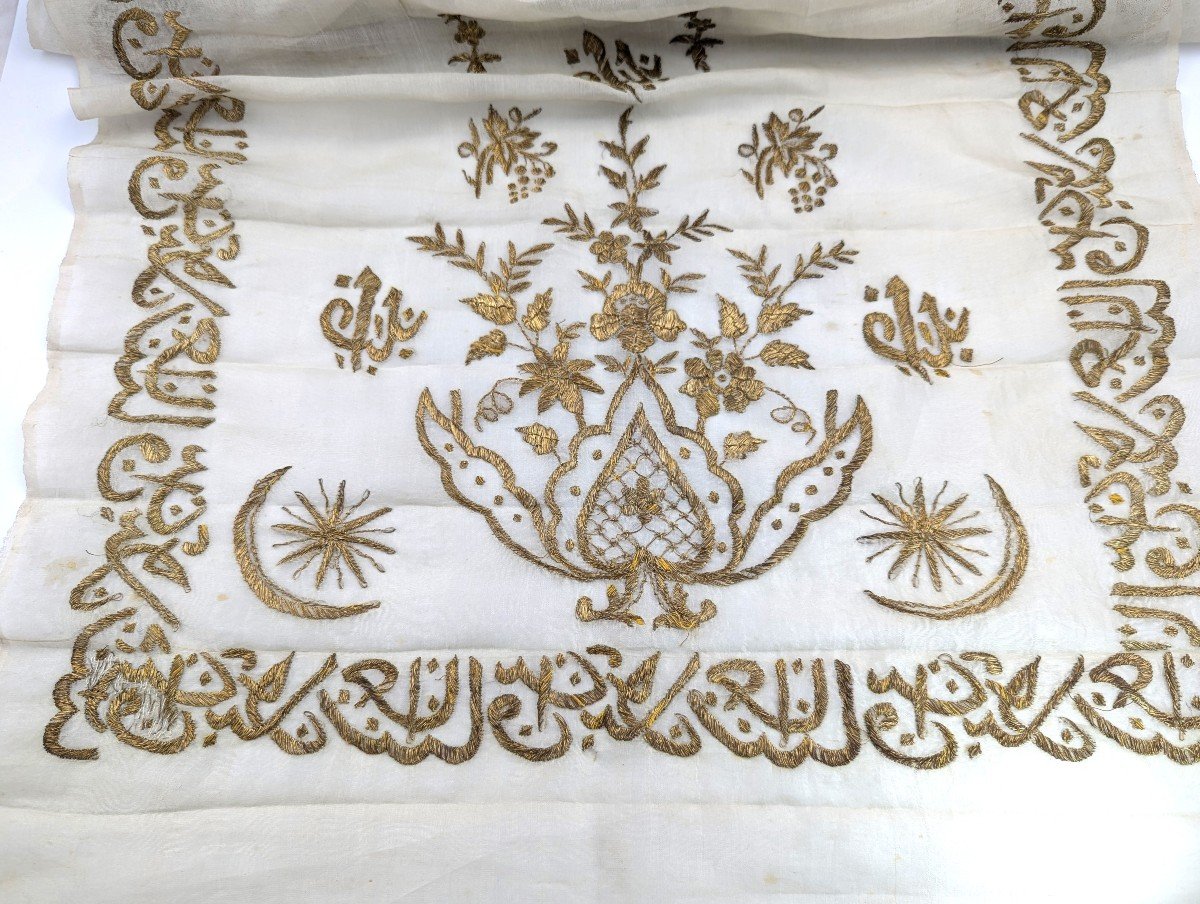
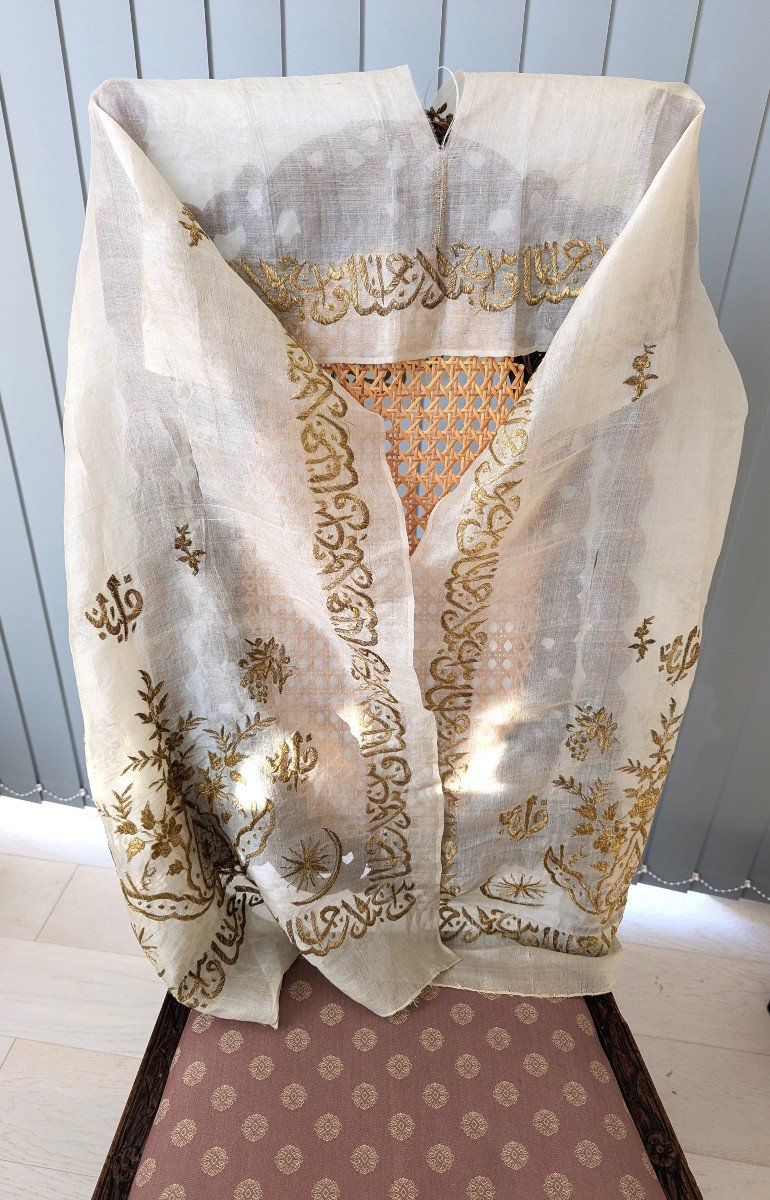


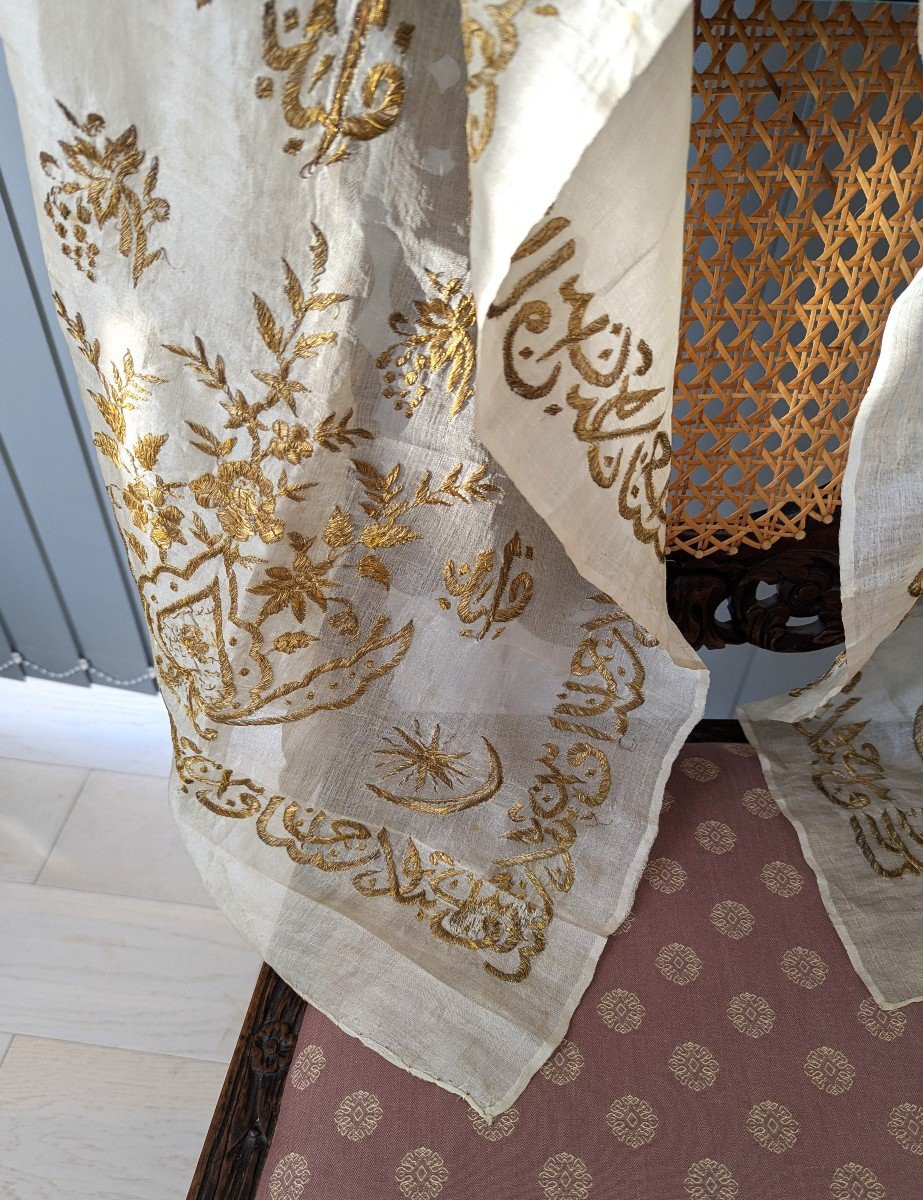
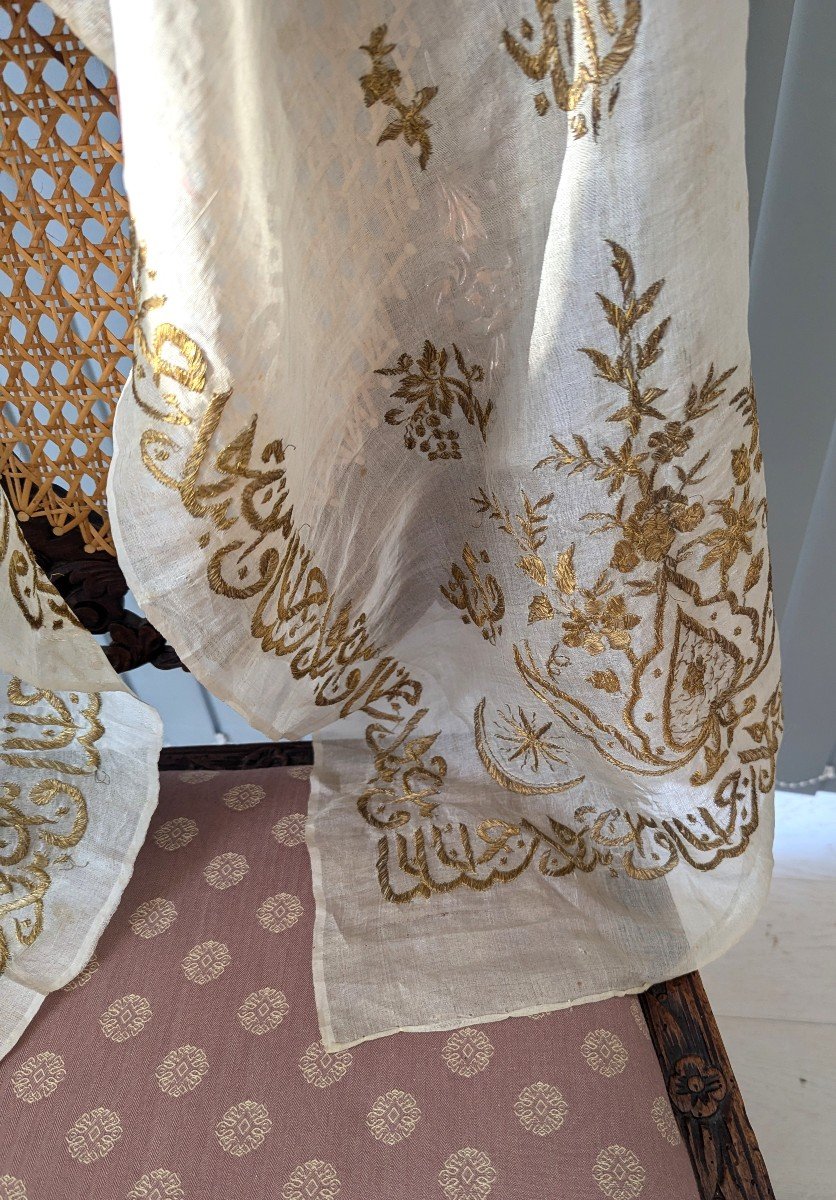
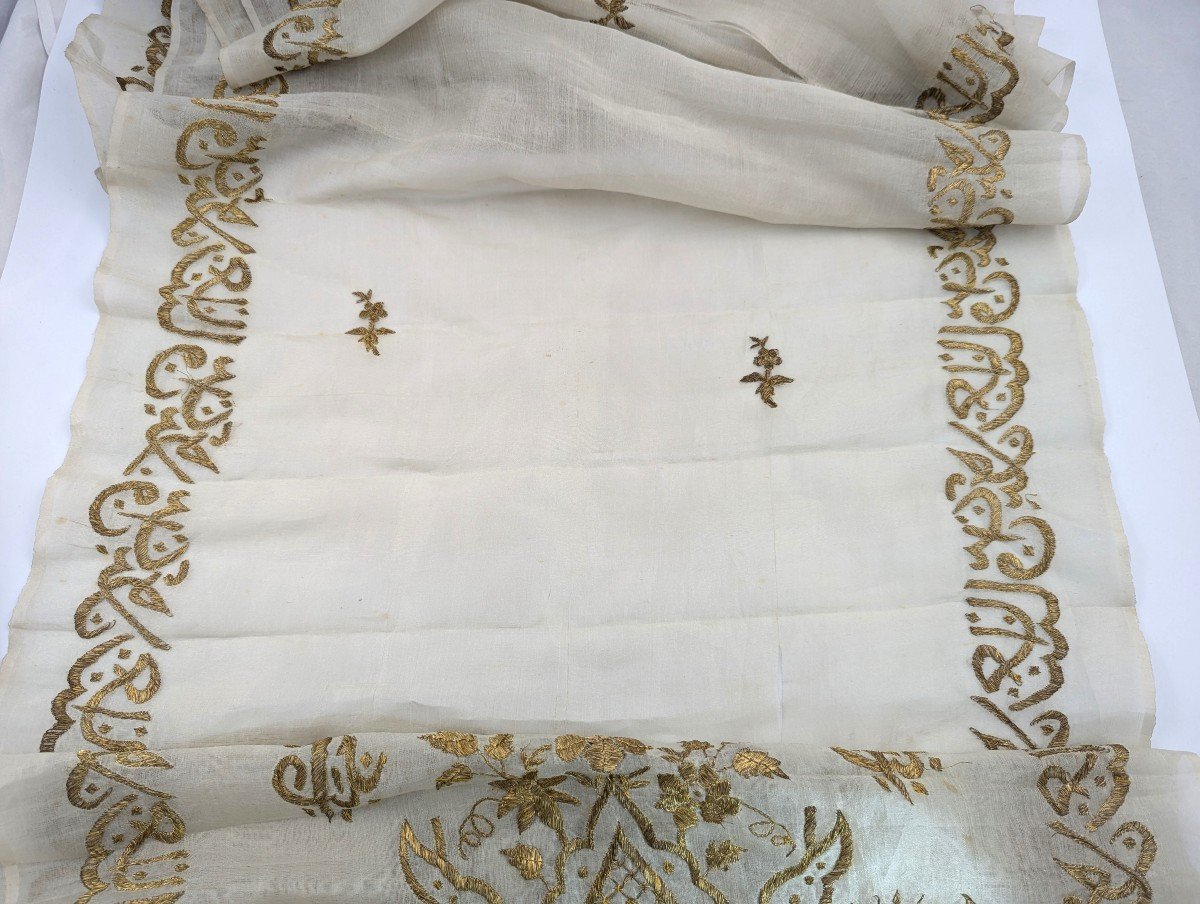
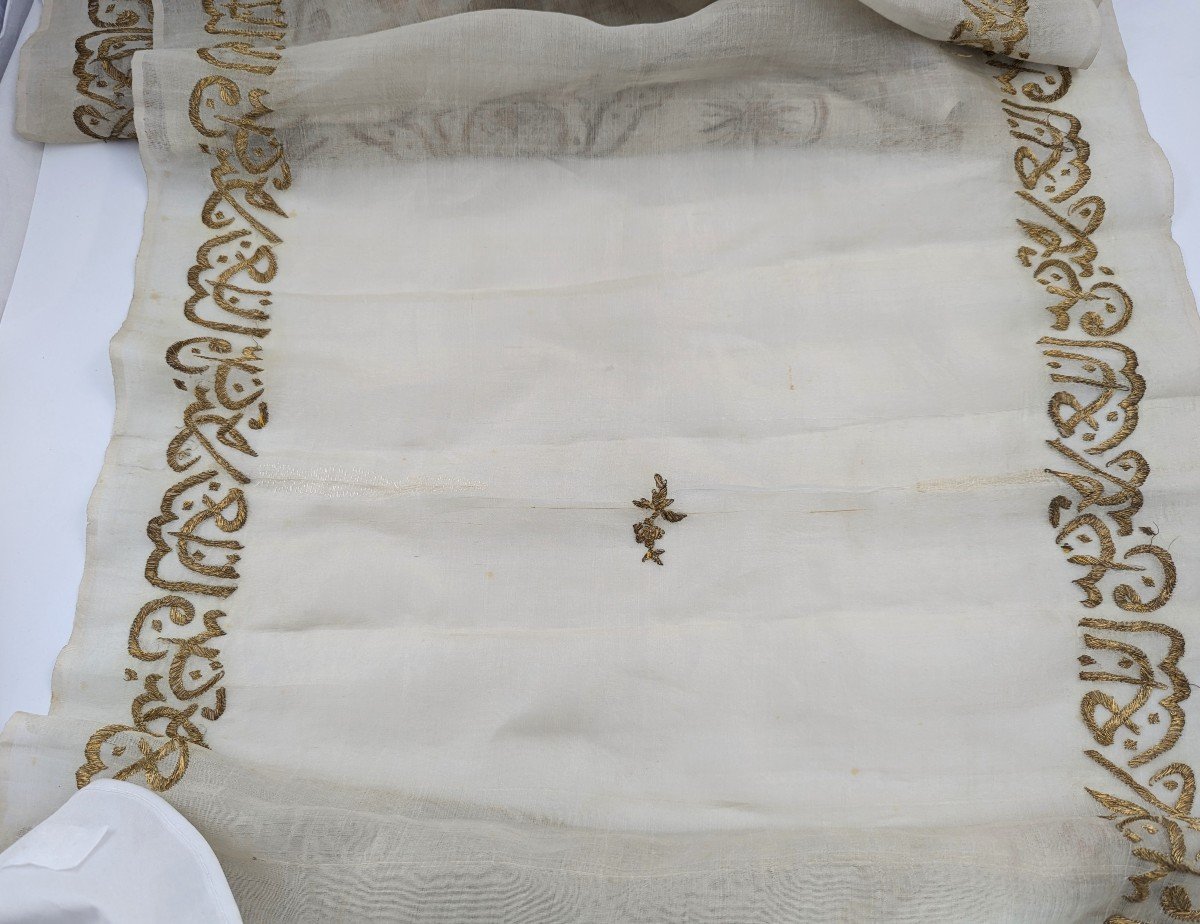

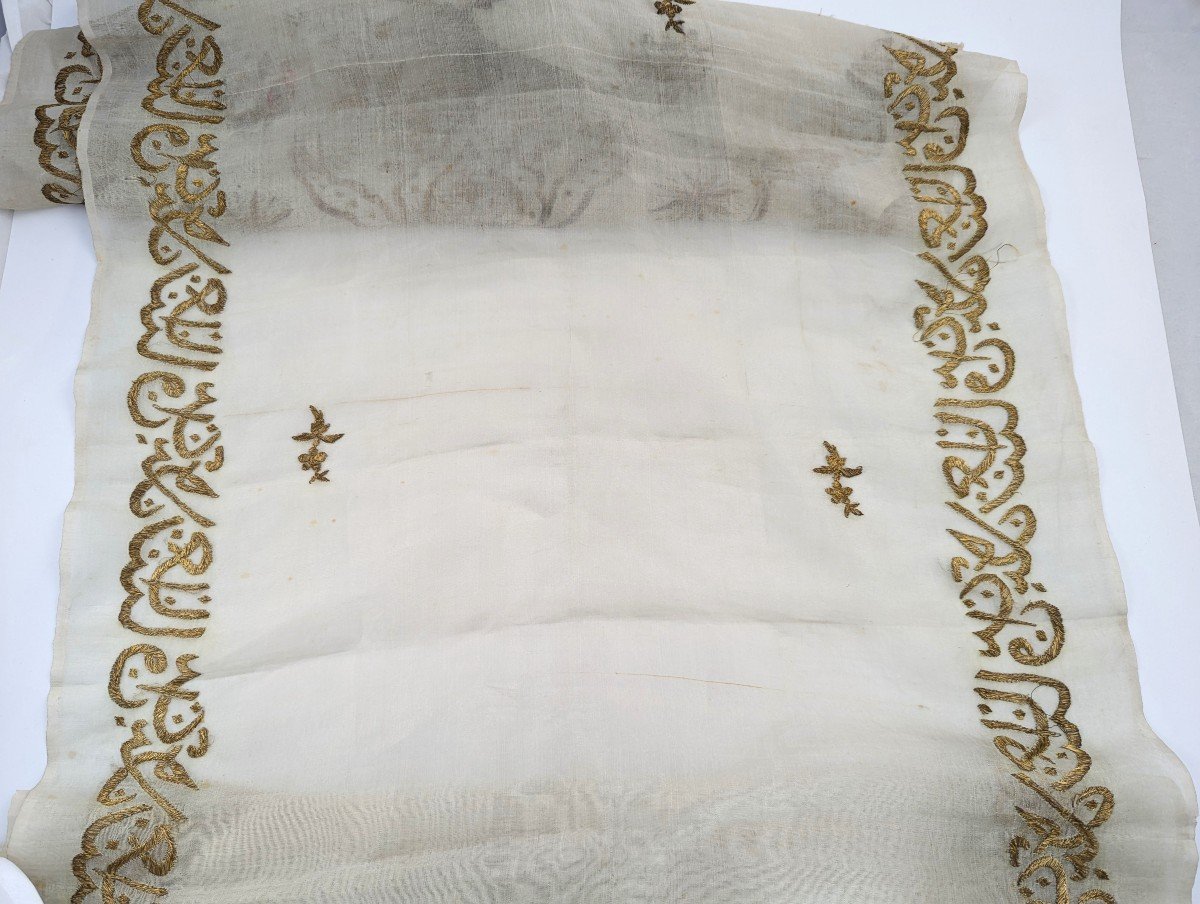

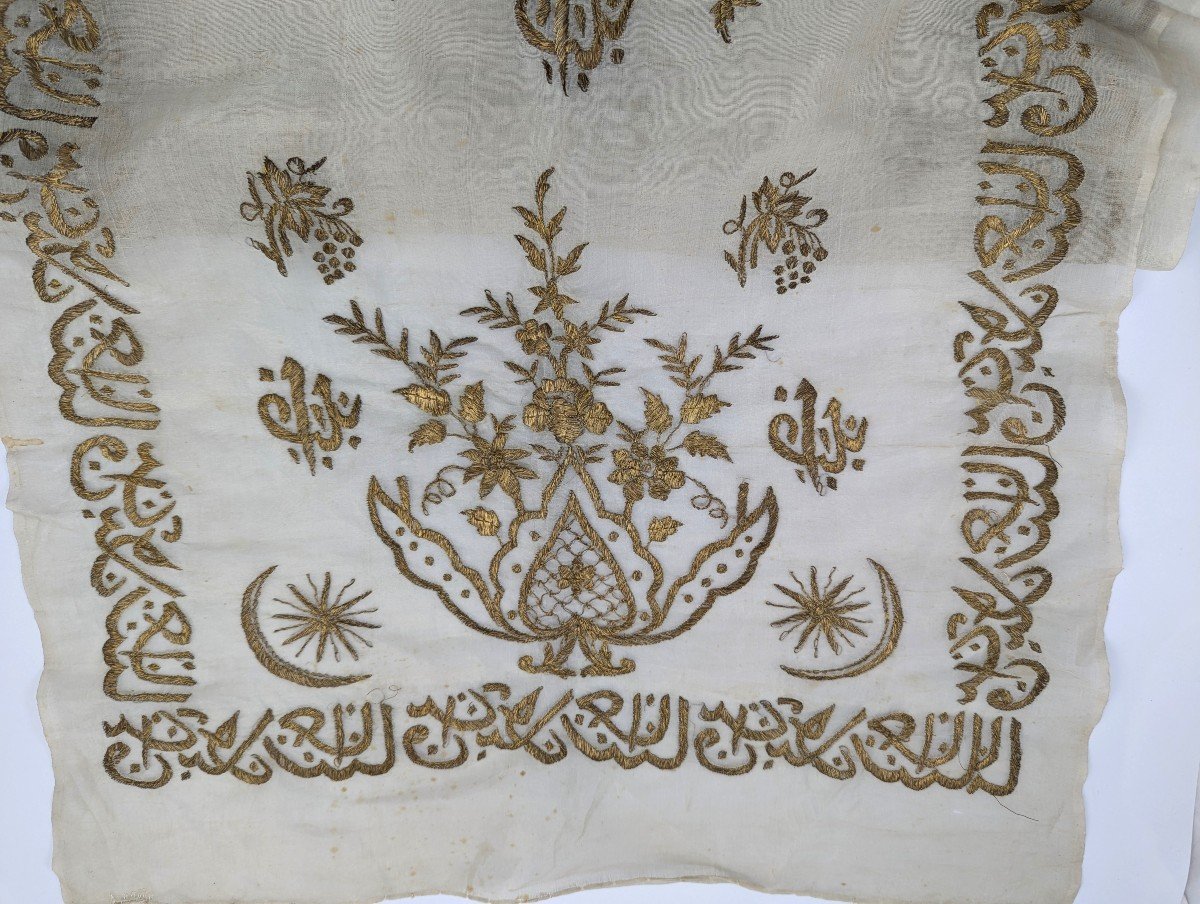




























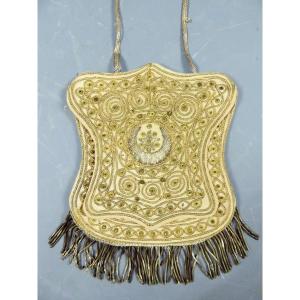
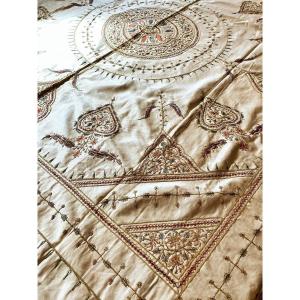


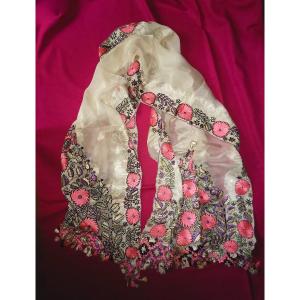



 Le Magazine de PROANTIC
Le Magazine de PROANTIC TRÉSORS Magazine
TRÉSORS Magazine Rivista Artiquariato
Rivista Artiquariato